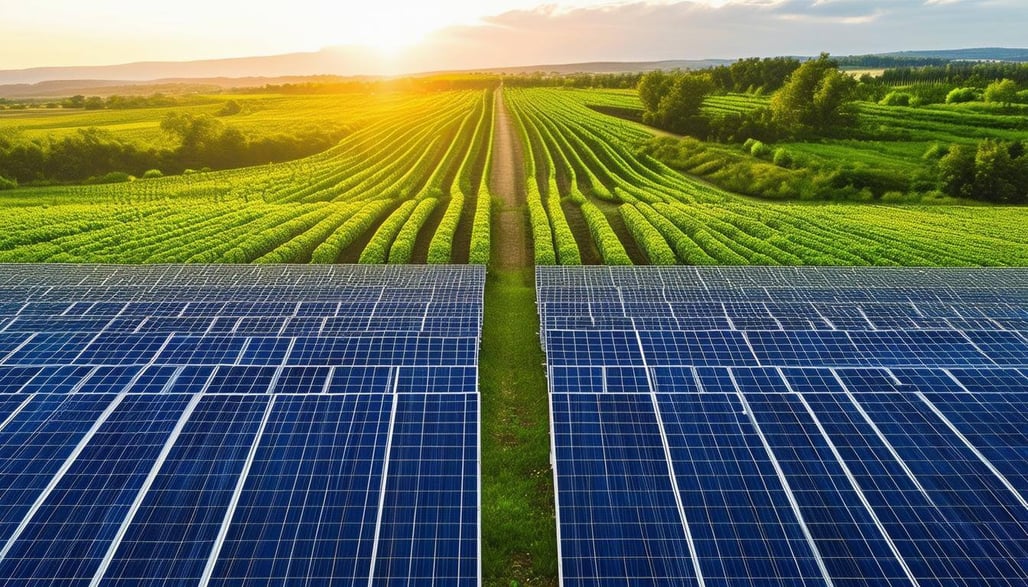
As we enter 2025, farmers, growers, and agribusinesses face a rapidly evolving landscape shaped by rising input costs, unpredictable weather patterns, and increasing environmental regulations. But alongside these challenges come new opportunities. Around the world, agricultural innovation is accelerating, with a strong focus on sustainability, resilience, and efficiency.
From AI-driven precision farming to regenerative soil management, climate-smart agriculture is no longer just a buzzword - it’s the key to securing long-term profitability and food security.
The following are five key trends MyNoke have observed as leading the way:
- Regenerative Agriculture: Healthy Soil, Resilient Farms
Regenerative agriculture is shifting from a niche practice to a mainstream movement. More farmers are adopting cover cropping, reduced tillage, rotational grazing, and diverse planting strategies to improve soil health and increase carbon sequestration. Across France, farmers are reintroducing hedgerows - once removed for large-scale mechanised farming - to improve soil stability, provide wind protection, and create habitats for pollinators and beneficial insects. Similarly, in the UK, regenerative dairy farms are adopting herbal leys - diverse pasture mixes of deep-rooted plants like chicory and plantain - to improve soil structure, enhance drought resilience, and reduce the need for synthetic fertilisers. Recent research carried out in New Zealand found herbs can influence nitrogen dynamics in the soil, suggesting plantain can reduce the loss of nitrates in waterlogged conditions.

- AI and Data-Driven Precision Farming
Technology is transforming decision-making on the farm. Artificial intelligence, remote sensing, and big data analytics allow farmers to optimise inputs - reducing water, fertiliser, and pesticide use while maximising yields. Launched in June 2023, AIMER Farming has developed an AI-powered system that analyses pasture data from various sources, including satellite imagery and on-farm sensors. Their smartphone app, AIMER Vision, utilises 360-degree imaging to estimate pasture measurements, enabling dairy farmers to optimise grazing plans and forecast feed availability up to 21 days in advance. This technology assists farmers in maximising pasture utilisation, improving feed quality, and reducing reliance on supplemental feeds.
- Climate-Resilient Crop Varieties
Breeding crops that can withstand heatwaves, droughts, and unexpected frosts is becoming a major focus in agricultural research. Scientists in Michigan are developing apple varieties with genes that delay blooming, preventing frost damage, while in sub-Saharan Africa, drought-resistant maize is helping farmers maintain productivity despite erratic rainfall. Closer to home, Zespri is investing in new technologies, innovative growing systems, and climate-resilient kiwifruit varieties to help growers reduce weather-related risks. Their goal is to boost fruit production sustainably while making orchard management more efficient and less labour-intensive. Research into resilient crops is critical as climate change intensifies, as Plant & Food Research highlight the urgent need for breeding strategies that enhance food security in a changing climate. These advancements are not only safeguarding food production but also reducing reliance on chemical inputs that can degrade soil and water quality.
- Smarter Water Management: Doing More with Less
Water is one of agriculture’s most precious resources, and efficient use is more important than ever. Drip irrigation, soil moisture sensors, and AI-powered water scheduling systems are helping farmers conserve water while ensuring crops receive just the right amount of hydration. In California, almond growers are implementing satellite-based monitoring to optimise irrigation, while in New Zealand, innovative water management practices are being adopted to enhance agricultural sustainability. Dairy Holdings in Canterbury has implemented advanced irrigation sensors that function like onboard agronomists, assisting in achieving significant water-saving targets. These sensors provide real-time data, enabling precise water application and reducing waste. With climate change making droughts more frequent, smart water use is becoming a necessity, not just a best practice.

- Renewable Energy Integration: Powering Farms Sustainably
Solar panels on dairy sheds, wind-powered irrigation pumps, and electrification of farming machinery are reshaping the way agriculture is powered. In Europe, agrivoltaic systems - where solar panels are installed above crops - are allowing farmers to produce food and energy simultaneously. Meanwhile, innovative growers in New Zealand are transitioning from diesel-powered machinery to electric alternatives. Mike Casey operates the world’s first electrified zero fossil fuel fruit orchard, demonstrating that, despite higher initial costs, the long-term savings and environmental benefits make electrification a viable option for modern growers. Investing in renewables is not just about sustainability - it’s a way to cut costs and build resilience against energy price fluctuations.
The Future of Farming and Growing
As these climate-smart trends gain momentum, they are reshaping the way food is grown, processed, and distributed. By staying informed and adopting forward-thinking practices, farmers can build more resilient businesses while playing a critical role in environmental stewardship. The shift towards sustainable agriculture isn’t just necessary - it’s an opportunity to innovate, increase efficiency, and secure the future of farming and growing for generations to come.
And if you're looking to improve your soil health get in touch with us today via 0800 MYNOKE to explore how worm castings can fit into your farming system.
